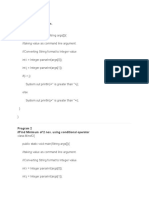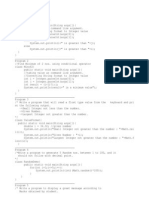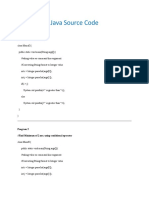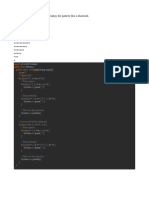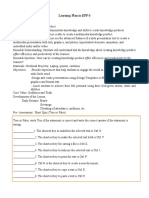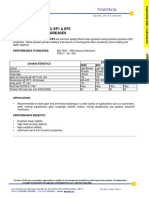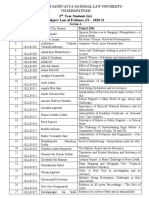1.
Write a program to display the first ten terms of the series:
5, 10, 17, --------------
public class SeriesProgram {
public static void main(String[] args) {
int term = 5;
int constantValue = 5;
System.out.print("First ten terms of the series: ");
for (int i = 0; i < 10; i++) {
System.out.print(term + " ");
// Calculate the next term in the series
term = term + constantValue;
// Increase the constant value by 2 for each iteration
constantValue += 2;
}
}
}
2.Write a program to display the given pattern:
11111
3333
555
77
9
public class LeftSidePattern {
public static void main(String[] args) {
int rows = 5;
for (int i = 1; i <= rows; i++) {
// Print numbers
for (int k = 1; k <= i; k++) {
System.out.print((2 * i - 1) + " ");
}
System.out.println();
}
}
}
3.Write a program to input a number. Find the sum of digits and the number of digits. Display
� the output.
Sample Input: 4539
Sum of digits = 21
Number of digits = 4
ans)import java.util.Scanner;
public class SumAndDigits {
public static void main(String[] args) {
// Create a Scanner object to read input from the user
Scanner scanner = new Scanner(System.in);
// Input a number from the user
System.out.print("Enter a number: ");
int number = scanner.nextInt();
// Close the Scanner since we have collected the input
scanner.close();
int sum = 0;
int numberOfDigits = 0;
int tempNumber = number;
// Calculate the sum of digits and count the number of digits
while (tempNumber != 0) {
int digit = tempNumber % 10;
sum += digit;
numberOfDigits++;
tempNumber /= 10;
}
// Display the results
System.out.println("Sum of digits = " + sum);
System.out.println("Number of digits = " + numberOfDigits);
}
}
4.Write a java program for the given type of number.A number is said to be Duck
if the digit zero is (0) present in it.
Sample Input: 5063
Sample Output: It is a Duck number.
Sample Input: 7453
�Sample Output: It i
s not a Duck number.
—------------------------------------------------------------
5.Write a menu driven class to accept a number from the user and check whether it
is a Palindrome or a Perfect number.
(a) Palindrome number: (A number is a Palindrome which when read in reverse
order is same as in the right order)
Example: 11, 101, 151 etc.
(b) Perfect number: (A number is called Perfect if it is equal to the sum of its
factors other than the number itself.)
Example: 6 = 1 + 2 + 3
—------------------------------------------------------------------
6.Write a program to display all the 'Buzz Numbers' between p and q (where p<q).
A 'Buzz Number' is the number which ends with 7 or is divisible by 7.











